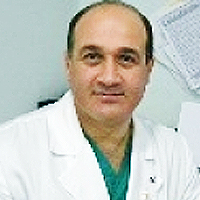Survey of Advanced Image Fusion Techniques for Enhanced Visualization in Cardiovascular Diagnosis and Treatment
Published on: 6th March, 2025
Cardiovascular Diseases (CVDs) remain a major global health concern, necessitating accurate and comprehensive diagnostic techniques. Traditional medical imaging modalities, such as CT angiography, PET, MRI, and ultrasound, provide crucial but limited information when used independently. Image fusion techniques integrate complementary modalities, enhance visualization, and improve diagnostic accuracy. This paper presents a theoretical study of advanced image fusion methods applied to cardiovascular imaging. We explore wavelet-based, Principal Component Analysis (PCA), and deep learning-driven fusion models, emphasizing their theoretical underpinnings, mathematical formulation, and potential clinical applications. The proposed framework enables improved coronary artery visualization, cardiac function assessment, and real-time hemodynamic analysis, offering a non-invasive and highly effective approach to cardiovascular diagnostics.MSC Codes: 68U10,94A08,92C55,65T60,62H25,68T07.
An Observational Study on Clinical Outcome and Predictors of Traumatic Cervical Injury at a Tertiary Care Facility
Published on: 26th March, 2025
Introduction: Cervical spinal cord injuries (CSIs) account for 2% - 3% of trauma cases and 8.2% of trauma- related fatalities, making them a significant cause of disability and mortality. Effective management and timely interventions are essential to improve neurological and functional outcomes. This study aimed to evaluate the outcomes of patients with CSIs and identify key predictors of neurological and functional improvement.Materials and methods: This prospective observational study was conducted over 12 months at SMS Medical College, Jaipur, involving 100 patients with CSIs from C1 to C7 vertebrae. Patients presenting within one week of injury were included. Clinical evaluation was conducted using the ASIA scoring system, and functional outcomes were assessed with the Functional Independence Measure (FIM) scale. MRI findings were analyzed to classify injuries and identify critical predictors, including the presence and extent of edema and listhesis grading.Results: Significant predictors of neurological improvement included injury type, management approach, MRI findings, extent of edema (≤ 2 vs. >2 segments), and listhesis grading. Operative management and incomplete injuries showed better outcomes. The median Barthel Index improved from 4.0 preoperatively to 7.0 at four months (p < 0.001). The mean FIM score also significantly increased from 43.25 ± 26.5 to 56.8 ± 40.75 (p < 0.05). ASIA Grades C and D demonstrated significant neurological recovery, with no grade deterioration observed.Conclusion: Age, injury type, management strategy, MRI findings, extent of edema, and listhesis grading are key predictors of outcomes in CSIs. These findings emphasize the importance of early diagnosis, timely surgical intervention, and comprehensive management in improving neurological and functional recovery. Multicentric studies with larger cohorts are recommended for broader generalizability.
Analysing Average Glandular Dose: A Comprehensive Study Comparing Digital Breast Tomosynthesis with Full-Field Digital Mammography in Oman
Published on: 31st March, 2025
Background: Full-field Digital Mammography (FFDM) is essential for the early detection of breast cancer. Digital Breast Tomosynthesis (DBT) has improved cancer diagnosis and reduced false positives in mammography . This study evaluated DRLs for FFDM and DBT at various ranges of Compressed Breast Thickness (CBT).Material and methods: We evaluated the parameters like Average Glandular Dose (AGD), kVp, mAs, Entrance Surface Dose (ESD), and CBT in a retrospective analysis of FFDM and DBT. We computed the mean, median, range, and 75th percentile for Craniocaudal (CC) and Mediolateral Oblique (MLO) views at various breast thicknesses.Results: The DRLs were 0.70 mGy to 2.55 mGy for FFDM and 0.94 mGy to 3.67 mGy for DBT for breast thickness in the range from 20 mm to 89 mm.Conclusion: This analysis revealed that DRLs were significantly lower than international benchmarks . Mammography radiation dose optimisation enhances diagnostic accuracy and patient safety.
Clinical and Histopathological Mismatch: A Case Report of Acral Fibromyxoma
Published on: 7th April, 2025
Background: Acral Fibromyxoma (AFM) is a rare benign soft tissue tumour which is described as a fibromatous and myxoid tumour of skin and soft tissue. Case details: A 40-year-old male presented to the Dermatology outpatient department with swelling over the wrist of one year duration. The swelling was associated with mild pain, and it gradually increased in size to reach its present size. Cutaneous examination revealed a 2x2 cm mobile, cystic to firm, non-tender swelling over the dorsum of the right wrist. Based on its location and clinical features, it was provisionally diagnosed as a ganglion cyst and excision biopsy was done. Histology showed stellate-shaped cells in a myxoid background with round to oval nuclei having a small, inconspicuous nucleolus. Acral fibromyxoma presents a distinct histopathology including a myxoid stroma and spindle-shaped cells, which are essential for accurate diagnosis and management.
Microcystic Meningioma: Atypical Meningioma Revisited. Rare Case Report with Review of Literature
Published on: 10th April, 2025
Meningiomas, classical extra-axial dural-based tumors of the meninges, have well-documented classical imaging features and signs on CT and MRI. Most meningiomas are classical lesions with prompt diagnosis on imaging and generally exhibit benign outcomes with slow growth patterns. The latest WHO classification of tumors in 2021 has classified 15 subtypes of meningiomas, and while classical meningiomas are WHO Grade 1 tumors, grading between varying subtypes varies between WHO Grades 1 and 3. The microcystic meningioma is a rare and atypical subtype of meningioma that has been sparsely documented in literature. In this case report, we revisit this rare subtype of meningioma with a brief review of literature.
Metastatic Brain Melanoma: A Rare Case with Review of Literature
Published on: 12th April, 2025
Melanoma is a highly malignant neoplasm arising from melanocytes, which are melanin-producing neural crest cells primarily located in the basal layer of the epidermis, making cutaneous melanoma the most common subtype. However, melanocytes are also found in other anatomical locations, and primary non-cutaneous melanomas, though rare, have been documented. Due to the aggressive nature of this malignancy, it carries a poor prognosis, particularly because it tends to metastasize to various, often atypical, sites. Recognizing these variable presentations is essential for timely diagnosis. Here, we report a rare case of metastatic brain melanoma in a young female and review the relevant literature, highlighting the importance of imaging in identification.
Unusual Complications of a Dental Prosthesis Esophageal Foreign Body: About a Case
Published on: 16th April, 2025
Foreign bodies of the esophagus are part of the traumatic emergencies in ENT. They are most often encountered in children, whereas in adults they occur in a particular context and are rarely overlooked.This was a 48-year-old patient from a neighboring country referred by a colleague for a history of neglected laryngeal contusion with infectious cervical fistula evolving for 2 years. Further questioning revealed a notion of accidental ingestion of dentures. The first endoscopy was of capital interest in especially in the diagnosis and management of this long-retained foreign body. The extraction under general anesthesia was done by a combined endoscopic and external approach. The postoperative course was marked by superinfection and swallowing disorders.Cervical suppurations secondary to esophageal foreign bodies are rare, especially in adults. Clinicians should consider this possibility in the face of any chronic cervical suppuration that resists treatment.
















